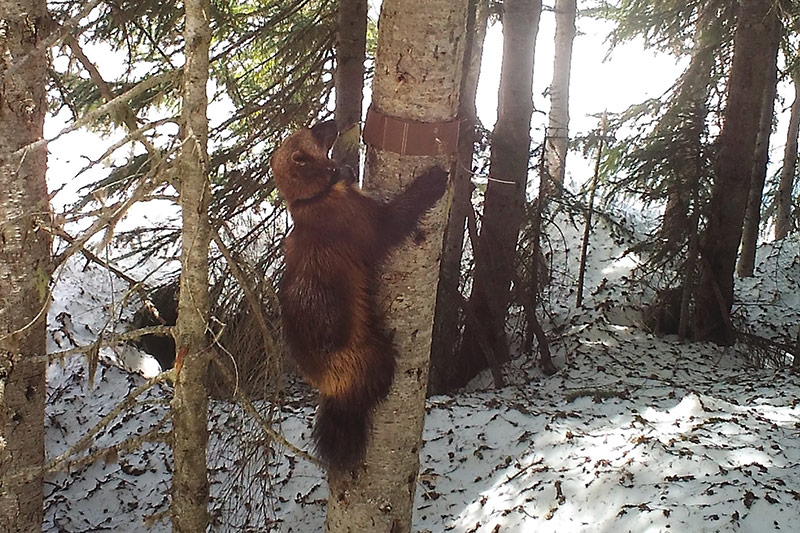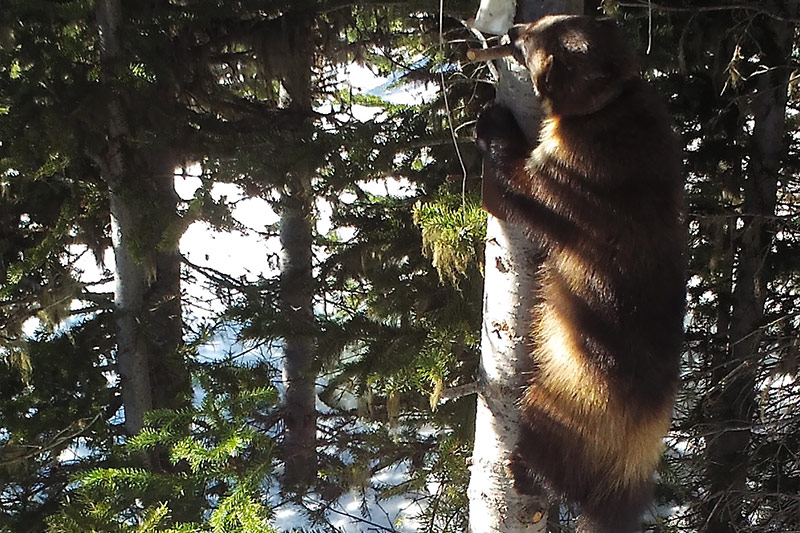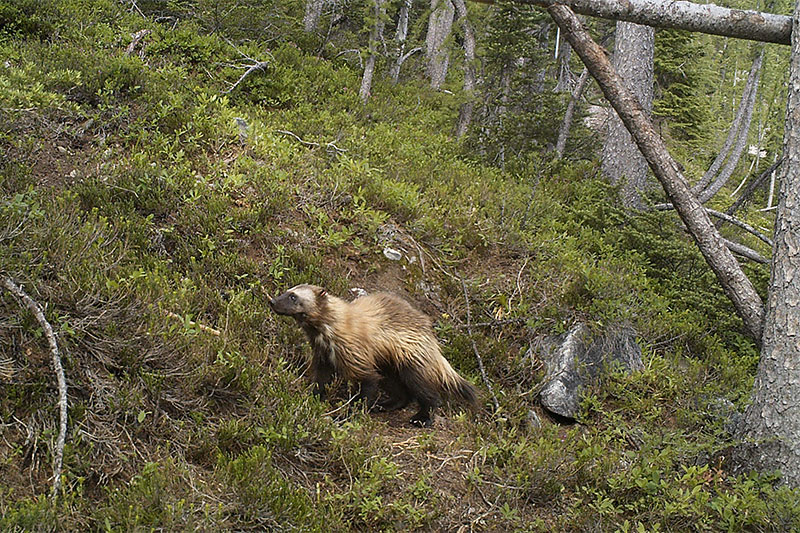NORTHWEST WOLVERINES
Washington Wolverine Project
Researching and monitoring wild wolverines in the face of climate change
CREATURES OF THE WILD NORTH
Wolverines are carnivores of the wild north, inhabiting the tundra/boreal biomes of North America and Eurasia. They require enormous landscapes, minimal human disturbance, and persistent snowpack into the spring.
By the early 1900s, wolverines were extinct in Washington due to over-trapping and widespread predator control. In recent years, however, wolverines have begun to recolonize the North Cascades of Washington, most likely from populations in British Columbia. Woodland Park Zoo has been at the forefront of regional wolverine conservation for six years, tracking the recovery of this small population in the face of climate change and other threats.
ABOUT THE PROJECT
We conduct our wolverine project in partnership with the US Forest Service, the Washington Department of Fish and Wildlife, and other collaborators. Our priorities include developing survey methods suitable for detecting these wide-ranging animals, monitoring wolverine distribution in the Cascades, and evaluating the population’s response to climate change.
We also actively engage in efforts to maintain and enhance habitat connectivity for wolverines and other montane species via participation in the Washington Wildlife Habitat Connectivity Working Group and other collaborative efforts.
Good News for Wolverines

New Tools
WPZ has successfully developed tools to monitor wolverines and other rare, high-mobility species, including a high-tech scent dispenser and a station-based protocol that detects wolverines with consistency.

Conservation Leadership
We are creating a long-term monitoring framework for wolverines in the Cascades, and also providing leadership to a multi-state wolverine monitoring effort as part of the Western States Forest Carnivore Working Group.

Working Together
As Pacific Northwest stakeholders join forces to mitigate the threats of climate change, we can work toward a sustainable future for wolverines and for our human communities.
WHAT YOU CAN DO
Make Changes
Threats from climate change affect all living things, and wolverines are particularly vulnerable to predicted reductions in snowpack and earlier spring snowmelt. Commit to lifestyle changes that lower your carbon footprint at home, and support companies and brands that share those values.
Advocacy
Habitat destruction and fragmentation can be mitigated with smart forest management. Advocate for intact habitats and forests by being a voice for wildlife. Vote with animals in mind and support local forest stewardship with community buy-in.
Stay Informed
Join conservation organizations in bringing climate change solutions to all. Volunteer at your local zoo, follow an eco-blog, or start a conversation with friends about ways you can take action on behalf of a healthier planet.
About Wolverines
Wolverines (Gulo gulo) are the largest terrestrial member of the weasel (or mustelid) family, which includes martens, mink, otters, and other species. Typically weighing 20–40 pounds, they have very thick coats and huge feet with semi-retractable claws, enabling them to travel many miles each day in steep, snowy terrain. In North America, wolverines are currently found in the western mountains, tundra, taiga, and boreal forests of Canada and Alaska, and in some of the remote, high-elevation alpine areas of Washington, Oregon, California, Idaho, Montana, and Wyoming. Only 300 or so wolverines remain in the Lower 48.
During winter, wolverines mostly scavenge carcasses in the snow and feed on the remains of animals killed by wolves or other large predators. They also rely on small or medium-sized prey they catch themselves—such as squirrels, hares, and marmots—and occasionally hunt larger mammals like caribou and deer. Wolverines use snow like a “refrigerator” to cache meat and keep it fresh.
Male wolverines usually mate with several females mid-summer, and are thought to develop lifelong bonds with their mates. Implantation of embryos is delayed such that, after a month-long gestation, the female gives birth to 1–4 kits in late February or March. Kits are born and raised in deep snow dens until they are weaned at approximately 10 weeks of age, with snow dens being vital for protection and insulation. This is why persistent spring snow is so important for wolverines.
In Washington, researchers have found three maternal wolverine dens in the last decade—two in the North Cascades and one near Mt. Rainier. Meanwhile, an adult males was killed on I-90 near Snoqualmie Pass in 2018, further showing that wolverines are on the move. As wolverines continue to recolonize their former range in the state, we need to make sure to protect their alpine habitat and address threats to their future.
MORE WAYS TO HELP